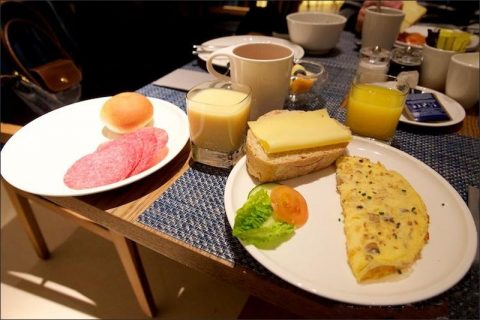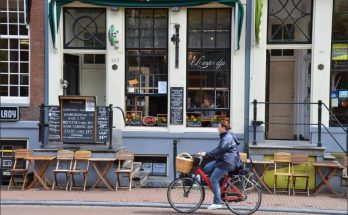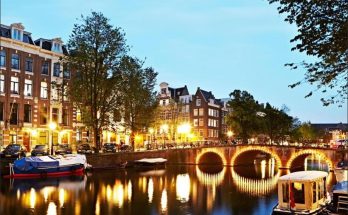The first meal of the day presents no problem in Amsterdam-it is always served in your hotel, is nearly always included free in the cost of your hotel room, and is always the most incredibly-large morning feast you’ve encountered: several sorts of Dutch breads and rolls, huge hunks of butter, marmalade, slices of luscious Dutch cheese, at least one slice of meat, sometimes a boiled egg, followed of course by tea or coffee. This is the “typical Dutch breakfast,” and most tourists are unable to eat again until evening. I’m told that even larger breakfasts are served in the south of Holland, but I for one find that hard to believe!
What do the Dutch eat for lunch? Well, most of them eat a second breakfast! By that, I refer to the famous institution of the “Hollandsche Koffietafel” (Dutch “coffee table”), and although it may be unfair to refer to it as a “breakfast,” it is essentially an expanded version of what you’ve had upon arising: several different kinds of bread, slices of cheese, butter, slices of meat-usually supplemented, this time, by a single small hot dish, such as a hot meat croquette or a bowl of soup, followed by either milk or coffee or tea.
For that percentage of traditionally-minded Dutch who lunch on a “koffietafel,” the custom is to put off a big hot meal until evening. And if that seems strange, then let it be known that the Dutch have the highest longevity rate in the world, which many attribute to their eating habits. Nor will the custom seem so strange if you will remember that many people in other countries-most particularly, the citizens of the United States, England and Scandinavia-also have a cold meal at lunch-consisting usually of sandwiches.
Most of the Dutch go in for a koffietafel (sandwich lunch and coffee) which is just as well, as evening meals have a tendency to be very high in carbohydrates. The best advice is: follow their example at lunchtime. There are over twenty-six types of cheese, so there’s no excuse for sticking to just Edam and Gouda. There are numerous regional specialities to sample; one of the best is groene haring (new herring) – this is salted herring roe and is surprisingly tender and savoury.
Follow the example of the Dutch and eat it from the street stalls. It’s at its best during the first few weeks in May and makes a welcome change from hamburgers. For your main meal in the evening, keep your eyes skinned for one of the 600 restaurants which serve the tourist menu. This is filling and cheap and is the same price everywhere, so if you like what’s on it, don’t waste your time looking elsewhere. If you prefer something a little more exotic, try ‘rijsttafel’ from one of the numerous Indonesian restaurants in most cities. The VVV offices will keep you informed as to what’s going on locally. In the larger cities there are plenty of nightclubs and discos, but expect to pay out quite a bit. Cinemas always show films in the original language with Dutch subtitles.



